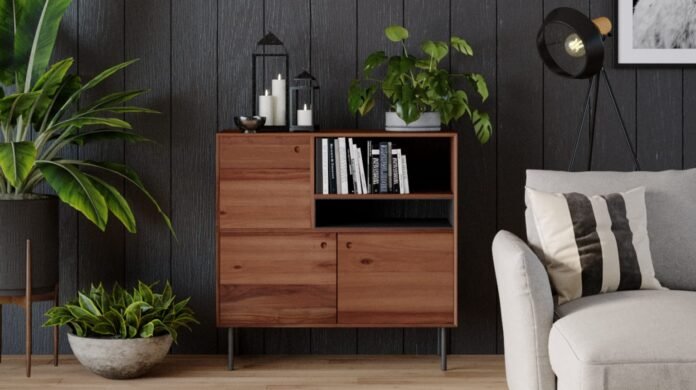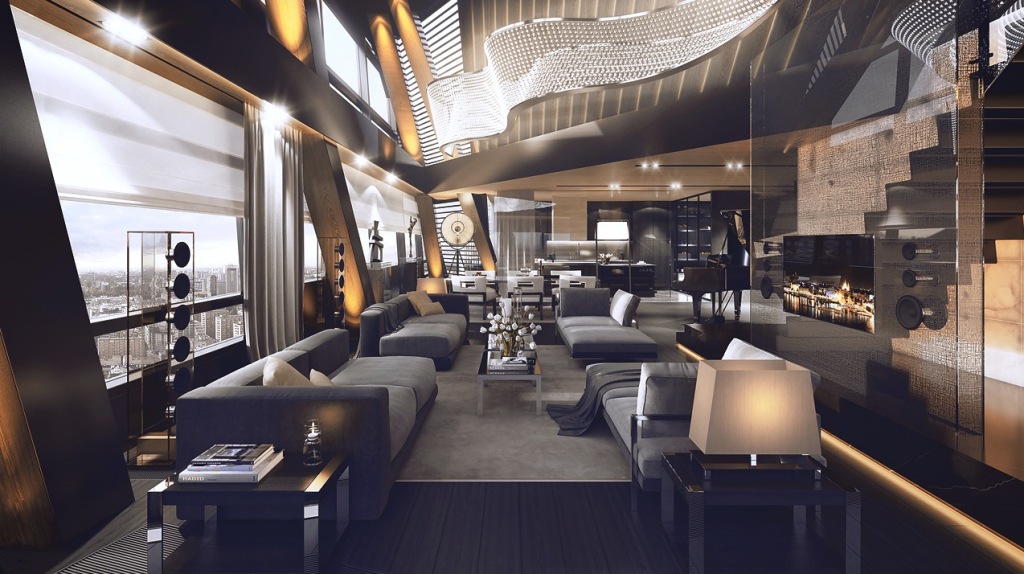Enhancing your home can sometimes be challenging. Practical as you are, you don’t want to bring in items that look good but don’t serve any purpose. Nobody wants a white elephant in their home, especially in today’s economy that focuses on the essentials.
If you want to add a piece of functional furniture to your dining room, you might want to consider buffet tables or sideboards. Perhaps you’ve never had one in your home, so you might be confused about what it really is and if you really need one.
This article will enlighten you about the subtle differences between a buffet table and a sideboard. Furthermore, it’ll give you valuable pointers in choosing the appropriate piece of furniture for your dining room.
What Is A Buffet Table?
As its name suggests, a buffet table is used to display platters of food. Buffet tables date back to centuries ago when lavish buffets were served in homes. For this purpose, this type of table is long, relatively narrow, and slightly taller than the dining table. This makes it convenient for guests to help themselves to food offered by the host.
You can also use a buffet table to store your tableware and table linens for easy access.
What Is A Sideboard?
A sideboard has similar dimensions to a buffet table. It has cabinets that typically extend down to the floor. Like a buffet table, a sideboard is a nifty piece of furniture for storing your dinnerware and other general items.
Sideboards rose to prominence in England in the 18th and 19th centuries. Back then, a sideboard was considered a must-have dining room accessory, especially in stately homes.
However, modern-day sideboards are no longer confined to the dining room. They can be placed in the living room, hallway, or entryway.
Difference Between The Two
Since buffet tables and sideboards look alike, most people use the terms interchangeably. However, there’s a subtle difference, as pointed out by experts in the furniture sector. The difference lies in the legs.
Sideboards usually have short, thick legs or no legs at all, while a buffet table has longer legs. In addition, a sideboard sometimes includes a hutch for displaying items, while a buffet table doesn’t feature a hutch in its design.
Factors To Consider
When purchasing any piece of furniture for your home, you need to consider several essential factors. Doing so would keep you from making an impulsive decision that you might later regret.
So, take the following factors into account when choosing a buffet table or sideboard, so you can be sure it’d be the perfect choice for your home:
- Functionality
Both buffet tables and sideboards are functional because they provide ample storage space for tableware, linens, and other serving items. Apart from this, what you need to check is the suitability of its storage features for the items you intend to store.
For instance, a buffet table or sideboard with drawers is ideal for keeping your cutlery, table linens, and plates. But if you intend to store relatively kitchen appliances or gadgets such as a blender, food processor, or mixer, you might need a buffet table with cabinet doors. Shelves are fine, too, as long as they’re adjustable.
- Style
In terms of style, you could either go for a piece that seamlessly blends with your dining room furniture or one that provides a stark contrast. To be safe, you might want a buffet table or sideboard that complements your dining room’s overall theme.
However, if you’re bold enough and not afraid to defy conventions, go for a carefully selected piece that provides just the right contrast. In essence, your buffet table could serve as an accent piece, drawing attention but not overpowering everything else.
- Design
After determining your preferred style, next comes the tricky part—the design. Here are some design ideas that you can choose from:
- Rustic
Consider a rustic design if your dining or living room has a natural, raw character. A rustic piece adds a unique appeal to your home design with its emphasis on preserving wood’s natural appearance, such as grain patterns.
- Traditional
The traditional design goes well with just about any home interior design. A classic piece of furniture with suitable carvings will also add a touch of understated elegance to your home.
- Farmhouse
Consider a farmhouse design for your sideboard or buffet table if your home has the cozy feel of a cottage or farm. The farmhouse design imparts an earthy ambiance with its typical palette of neutral colors like white, beige, or taupe.
- Modern
A modern piece is usually sleek, bold, and unconventional. It can even combine different materials for maximum visual appeal.
- Size
When choosing a buffet table or sideboard, you should consider its size relative to your dining or living room. Generally, it shouldn’t be too big or too small.
On average, a buffet table or sideboard measures 20 to 22 inches from front to back. This piece of furniture shouldn’t be any wider than that because you need to allocate a minimum of 24 inches of space between your furniture pieces.
On the other hand, the average length is 60 inches. This is perfect if your dining table is about the same length. But if your table is considerably shorter, the standard-size buffet table might not be suitable. Get a buffet table or sideboard comparable in length to your dining table.
- Height
The recommended height for a buffet table is 36 inches, which is about as tall as the standard kitchen counter. This height is ideal because it lets you comfortably set down platters of food. Also, it allows your family members and guests to get food conveniently. Note that buffet tables are typically taller than the dining table, usually 30 inches tall.
However, you could always choose a buffet table that’s slightly taller or slightly shorter, depending on the height of your family members. The good thing is that the standard height of buffet tables ranges from 34 to 38 inches. So, you don’t have to put up with a piece of furniture that’s not ergonomically appropriate for your family.
- Material
Buffet tables and sideboards are traditionally made of wood. However, modern pieces incorporate other materials such as glass for cabinet doors or a marble top. Others are made entirely of plastics and metal.
The conservative option is to go for a material that matches the color or the type of wood of your dining table. But suppose your taste is far from conservative or eclectic even. In that case, nothing’s stopping you from getting a table in a contrasting color or made of a material different from your existing pieces.
Final Words
Buying any piece of furniture is a decision you shouldn’t take lightly. It may not be a significant expense, but you’ll have to live with your decision for a long time. So, don’t be hasty in your purchase. Instead, consider the pointers discussed above, so you can get a buffet table or sideboard that’s just perfect for your home.



















